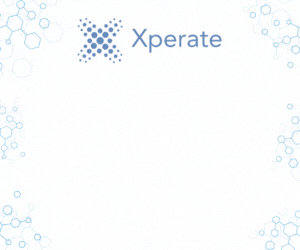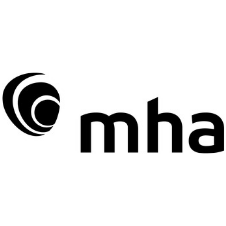MHA: Professional practices – Proposed change of taxation basis (CITB) for the self-employed, partnerships and LLP’s
The current year basis (“CYB”) of assessment of self-employed and partnership profits came to us about a quarter of a century ago, replacing the previous and highly anachronistic ‘previous year basis’ of assessment.
For existing businesses, 1996/97 was the transitional tax year during which profits were assessed on an averaged basis followed by 1997/98 when the basis of taxation was changed so that the profits to be assessed were those the related to the accounting year that ended in the tax year. Thus, profits for the year to 30th April 1997 at one end to those for the year to 31st March 1998 at the other. The CYB introduced the concept of overlap relief. That is for businesses with a year end other than 31st March, there would always be profits that were double-taxed upfront which would be relieved generally upon cessation (or proportionately as the accounting year was shifted towards 31st March).
On 20th July 2021, a consultation paper was issued regarding a change in the basis period for the self-employed, partnerships and LLPs. At a very simple level, it is proposed that the basis of taxation be changed from the CYB that has been with us for the last 25 years or so, to what will be termed an earnings basis i.e. look first to the tax year in question and then time apportion the accounts. Thus, for the year to 5th April 2030, with a business with a 30th September year end, one would base the taxable profits on 6/12ths of the profits for 30th September 2029 and 6/12ths of the profits for the year to 30th September 2030. This is referred to as the Change in Taxation Basis (“CITB”).
MHA Comment: There is a clear sense of Déjà vu – the proposed change is redolent of the basis of taxation of directors’ salaries that applied until the late 1980’s. i.e. directors were taxed on an earnings basis rather than a receipts basis. It was a mess! There was a concessional “accounts basis” of assessment (that was similar in effect to CYB). This was a mess too! The adage “Those who do not remember the past are condemned to repeat it.” comes to mind. It seems self-evident that the past has not been remembered.
A level playing field?
It has not been heard recently, however, successive Governments have championed the merits of a level playing field from a taxation viewpoint i.e. your business structure should not impact upon how much tax you pay (and it is suggested that this should be extended to when you pay tax).
A prime example of the so-called level playing field was the mixed-partnership legislation which operates so as to re assign certain partnership profits from corporate members to individual participants in a partnership, purportedly introduced in the spirit of ensuring that a level playing field was ensured. Had there been a level playing field in the first instance, the need for this legislation is not entirely apparent but that is perhaps by the by.
The CITB proposal, as matters stand, suggests a move away from the level playing field concept (to the extent that it has ever really existed) as small businesses operating other than through companies will pay tax earlier than their company equivalents.
HMRC assert that 93% of sole traders and 67% of partnerships use 31st March as a year end. This may be numerically correct, however, it is suggested that if one looks at businesses with a degree of commercial substance, the figures don’t stack. Simple businesses may well operate with a 31st March year end, but this is often not the case for more complex businesses. There will be certain sectors such as agriculture, where 31st March is not commercially appropriate and there are others where 31st March is not the selected year end due to say international considerations or simply history.
Corporation Tax has at least a semi-logical taxation system i.e. taxation by reference to the accounting period end of the company in question. Generally, the default position is taxing profits nine months after the end of the accounting year in which they are generated. This is augmented by the quarterly instalment payment scheme (“QIPS”) regimes for large and very large companies. There are certainly anomalies in the QIPS regime, however, it is suggested that these are nothing as compared to the issues that will arise with the proposed change to the basis of taxation of the self-employed, partnerships and LLPs.
A non-QIP corporate business that draws its accounts for the year to 31st December 2026 will be due to pay corporation tax on 1st October 2027.
Scenario
A business that operates through self-employment/partnership/LLP will pay tax on the same profits as follows:
• From 1st January 2026 to 31st March 2026 – part of the 2025/26 tax year:
Payments on account made 31st January 2026, 31st July 2026 and the balancing payment, 31st January 2027.
• From 1st April 2026 to 31st December 2026, part of the 2026/27 tax year:
Payments on account made 31st January 2027, 31st July 2027 and the balancing payment, 31st January 2028.
Except in a business with a highly rising profit trend, a non-QIP corporate will pay tax long after its income tax charged equivalent business under the proposed CITB.
The shape of things to come?
Government accounting operates on a cash basis i.e. it looks at receipts and expenditure not at revenue being generated and expenditure being incurred.
In an arena where pledges have been made not to change the rates of many of the taxes that raise the most money for the Government purse, the temptation is obviously compelling to accelerate tax payments to an earlier year.
The CITB is, it is suggested, blatantly such a move. As MTD for companies moves forward, this must inexorably be followed by acceleration of tax payments by companies that are not already within the QIPS regime, no doubt, using the level playing field concept, when that suits.
What then, of simplification?
This proposed CITB is in no way a simplification of the tax system. It grossly complicates the taxation of any non company business that does not have a 31st March year end.
Further, perversely, the administrative burden on businesses with a late tax year end (other than 31st March) will suffer most (i.e. those with the least tax-deferral under CYB will have the greatest burden). To illustrate the administrative issue, taking the year to 5th April 2027, for a business with a 31st December tax year, tax returns must be filed by 31st January 2028 and these will be based upon the accounts for 31st December 2026 (9/12ths) and 31st December 2027 (3/12ths).
The latter accounts simply will not be finalised and the returns will have to be provisional until final figures for 31st December 2027 are finally available.
What is proposed by CITB is anything but a simplification to the tax system.
The transition
The move to new basis of taxation will create headaches for those businesses operating other than with a 31st March year end.
What is proposed is that for the year to 5th April 2023, the basis period will essentially be the CYB profits (for example, the year to 30th September 2022) plus the apportioned profits attributable to the period to 31st March 2023 (extending the example, 6/12ths of the profit for the year to 30th September 2023). All overlap relief will be released.
Overlap relief – the issue
The release of overlap relief on the proposed change in basis provides a measure of relief from tax charges due to the aggregation of profits in the transitional year, however, because of the mechanics of overlap relief, there are potential serious issues arising.
If one takes an individual brought into a partnership with a 30th September year-end on 1st October 2004 with a profit share to 30th September 2005 of £80,000, their overlap relief is £40,000. Let us then assume due to progression and growth, their profit share for the year to 30th September to 30th September 2022 is £130,000 and the profit share for the year to 30th September 2023 is £160,000.
The profits assessable for the year 5th April 2023 will be as follows:
| Accounting year end | Profits (£) | Apportioned profits (£) |
| 30th September 2022 | 130,000 | 130,000 |
| 30th September 2023 | 160,000 | 80,000 |
| Less | ||
| Overlap relief | (40,000) | |
| Taxable profit | 170,000 |
But for the change in tax basis, the taxable profit would have been £130,000. With the new rules, it will be £170,000 – both an acceleration of £40,000 profits but also, £20,000 falling into the 45% rate of tax rather than just £10,000 that would have been the case had the rules not changed (i.e. the profits for the year to 30th September 2023 over £150,000 that would have been assessed under the CYB for 2023/24).
Thus, tax is accelerated and due at a higher rate.
What to do?
Cases are specific. Consider that:
• We have the personal tax allowance that is clawed back from £100,000 that creates a 60% tax rates from £100,000 to £125,000
• We have the claw back of Child Benefit between £50,000 and £60,000.
• We are told that Government is considering a spreading provision under which the profit that is brought into charge in the transition from CYB (it is assumed net of overlap relief released) may be taxed over five years.
The basis of the spreading charge is not clear (and indeed it is noted only as being a consideration), except for the proposal that profits that are brought into charge from the CITB may be spread over five years. It is assumed that 1/5th of the net profit would be taxed in each of the tax years 2022/23, 2023/24, 2024/2025, 2025/26 and 2026/27.
The question that the spreading charge raises is, to whom does the spreading charge belong when looking at a partnership?
The concept of partnership taxation is that the profits chargeable are apportioned between partners in profit sharing ratio and therefore the question arises as to whether incoming partners get to “share” in the tax charge for profit periods that they were not partners or whether departing partners retain liability.
This needs to be looked at in two separate ways; firstly the legislative operation of the spreading charge and then how the partnership itself makes provision for tax.
It is assumed that the spreading charge legislative framework, if it is adopted, will follow the basis of what was done some twenty years ago on the move away from cash basis and dealing with the profit acceleration relating to the adoption of UITF32. With previous spreading charges, the deferred profit “belonged” to the partnership and was brought into the charge to tax by reference to the profit-sharing ratios for each year into which the profit was deemed to fall, with the express provision that any profit that had not been brought into account would be taxed in the year of a permanent cessation of the partnership, using the profit-sharing ratio for that year.
MHA Comment: It is yet to be seen if the spreading charge will be adopted and if so on what basis. Particularly
with large partnerships, tax provisioning will need to be looked at very carefully particularly regarding to joiners, leavers and cases where profit sharing changes materially during the period of any spreading charge. Additionally, there must be concern that over the five-year period of the spreading charge, there may be tax rate increases.
It may well be that these new provisions will provide a nudge towards the adoption of a 31st March year end for impacted businesses, however, early adoption would appear not to be an attractive option where overlap profits are low compared to current levels of profitability: the spreading charge, if it is brought in, would appear to be available only to profits attributable to the CITB and not to an earlier change in accounting date, anticipating this basis change.
Non-standard situations
There appears to be a complete absence of guidance on non-standard situations.
For example, whilst the mixed partnership legislation may have reduced the number of partnerships with corporate members, they still exist and how profits of a corporate member should be reflected is entirely uncertain. It is also unclear how the transitional rules will interact with farmers’ two year or five-year averaging (and other business sectors to which averaging applies). For those sectors to which averaging does not apply but where there is high volatility in profits, care will need to be taken.
Watch this space
The suggested motives for this consultation have been set out above:
• a politically acceptable acceleration of tax receipts at the cost of further complexity in the tax system, with;
• a further move away from any semblance of a level playing field.
It seems inevitable, in the current environment, that this policy will be proceeded with and the limited consultation period should be seen as a cynical exercise in being able to respond to future criticism that a consultation exercise had been followed. The document issued by Government is woefully short on detail and as always with our already hideously complex tax system, the devil is in the detail. This will need to be scrutinised as it emerges over forthcoming months.
If you would like to discuss any matter arising from this article, please contact your local office or visit: mha-uk.co.uk



